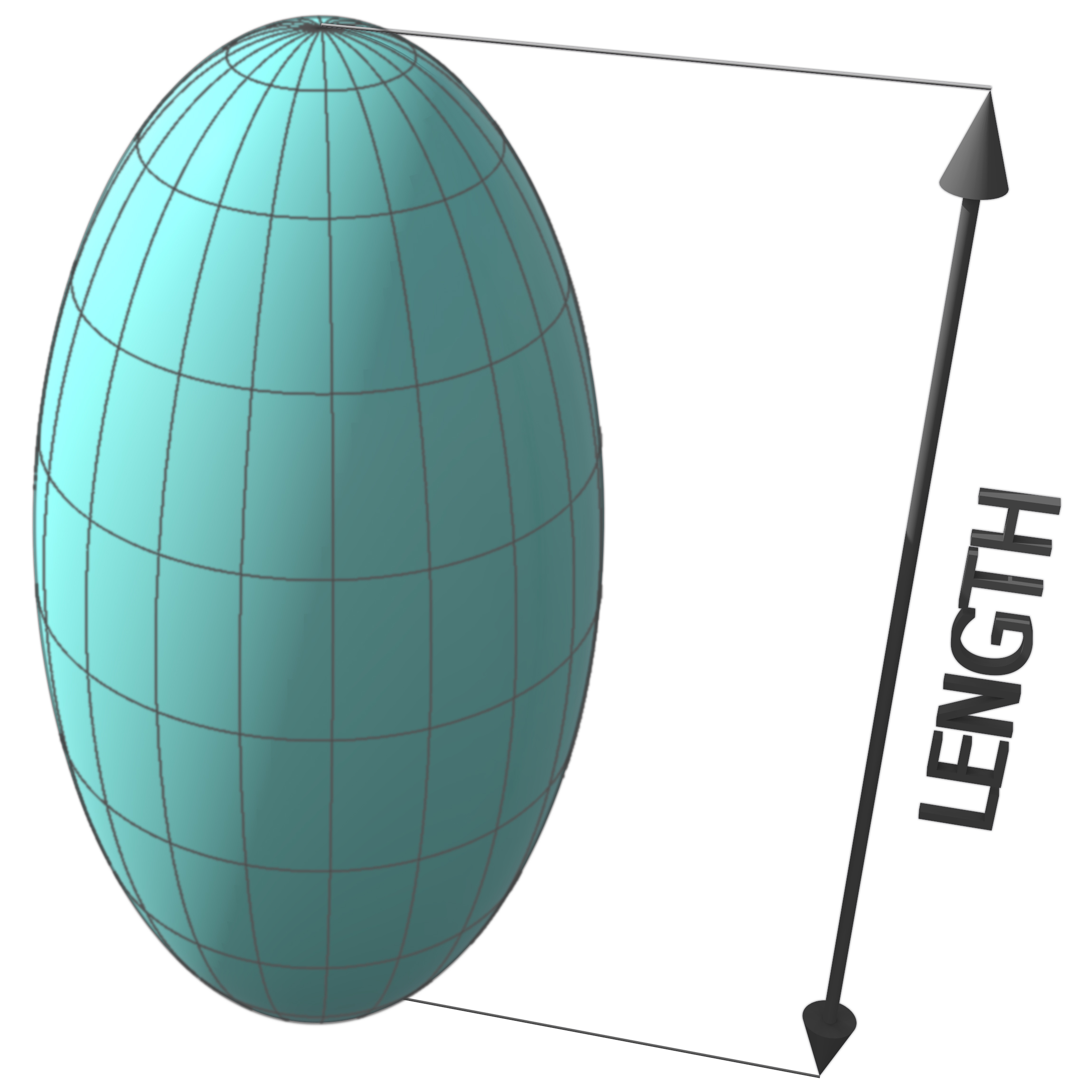Precipitation Morphology
As the spherical particle is the default morphology, for precipitations within the grain, three non-spherical shapes are considered: cuboid, plate and needle.
Precipitation Calculator: Precipitate Phase Settings
Cuboid
Figure 1: Cuboids have six faces, which form a convex polyhedron.
The cuboid shape is described by a supersphere

with p=2 being spherical shape. The larger the p, the more cubic the shape. Sometimes it is useful to define the cubical character as

Which gives a spherical shape when  , and a cubic shape when
, and a cubic shape when  .
.
Plate
Figure 2: Oblate spheroids have rotational symmetry around an axis from pole to pole.
The plate is described as oblate spheroid

with aspect ratio

Needle
Figure 3: A prolate spheroid is a surface of revolution obtained by rotating an ellipse about its major axis.
The needle shape is described as prolate spheroid

with aspect ratio

Precipitations at a Grain Boundary, Edge or Corner
For precipitations at a grain boundary, grain edge, or grain corner, non-spherical particles are considered based on wetting angle.


